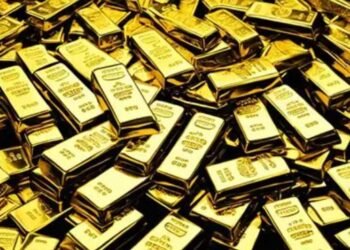Long before the establishment of the Royal Mint, the ancient Britons were already crafting coins. Around the end of the second century BC, the earliest coins were cast in moulds, a primitive yet effective method. These coins, often made of gold or silver, bore designs that reflected the art and beliefs of the Iron Age communities.
With the Roman conquest of Britain, this indigenous coinage system saw a transformation. The Romans introduced their own coins, which soon became the primary currency across the land. By the end of the third century, London saw the establishment of its first mint, marking the beginning of a tradition that would evolve over millennia. Although operational for a mere 40 years, this mint laid the foundation for what would become a cornerstone of British economic history.
The Resurgence of the London Mint
Following the departure of the Romans, Britain entered a period of economic and political fragmentation. However, by the mid-7th century, the London Mint began to re-emerge, albeit with initial instability. During the reign of Alfred the Great, between 871 and 899, the mint’s operations gained momentum. Coins struck during his rule, such as the famed silver penny, bore inscriptions like “LONDINIA”, signifying their London origin.
This era also witnessed a proliferation of mints across the country; from a mere 30 during Alfred’s time, the number surged to over 70 by the reign of Aethelred II. Most southern market towns boasted their own mint, reflecting the growing economic activity of the era. However, the Norman Conquest brought significant changes, centralising and streamlining the minting process, setting the stage for the Royal Mint’s evolution into a pivotal institution in Britain’s financial landscape.
The Golden Legacy
With its timeless allure and intrinsic value, gold has always held a special place in the annals of British coinage. Historically, from the gold coins of the Iron Age to the exquisite designs of the medieval era, the gleam of this precious metal has symbolised wealth, power, and prestige. The Royal Mint, building upon this rich heritage, has produced some of the world’s most renowned gold coins.
One such iconic piece is the gold sovereign, a coin that has witnessed the ebb and flow of empires, wars, and economic shifts. Struck for the first time in the early 16th century, the sovereign became a symbol of Britain’s global dominance. Even as the Royal Mint transitioned from Tower Hill to Llantrisant, the last coin minted in London was, fittingly, a gold sovereign. With the help of Gold Avenue, you can buy gold coins produced by the Royal Mint today! Gold Avenue is a premier retailer of precious metals, including gold coins minted by the Royal Mint. The Royal Mint’s golden legacy, intertwined with Britain’s history, showcases the enduring significance of gold coins in the nation’s monetary journey.
Innovations in the Tower of London
Within the formidable walls of the Tower of London, the Royal Mint embarked on a journey of innovation that would revolutionise coin production. For over a millennium, coins were struck by hand, a laborious process that required immense skill and precision. However, as the demands of a growing economy and the need for uniformity became evident, the Mint sought to modernise its operations. The 17th century marked a pivotal shift with the introduction of mills and presses.
These machines enhanced the aesthetic quality of the coins and made them harder to counterfeit. Yet, this mechanisation brought to light the cramped conditions within the Tower. The juxtaposition of ancient walls with cutting-edge machinery highlighted the Mint’s adaptability. As the centuries rolled on, the Tower witnessed occasional disputes and growing pains, but it remained a testament to the Mint’s commitment to innovation and excellence in coinage.
The Modernisation and Expansion of the Royal Mint
As the 18th century drew to a close, the Royal Mint faced challenges that its historic Tower of London location could no longer accommodate. The burgeoning demands of a global empire, coupled with the advent of steam-powered machinery, necessitated a more expansive and modern facility. Tower Hill, a stone’s throw away from the ancient Tower, was chosen as the new site.
Previously housing tobacco warehouses and the remnants of the Cistercian Abbey of St Mary of Graces, this location was transformed into a state-of-the-art minting complex. Beginning in 1805, the new buildings were equipped with the latest steam-powered machinery, marking a significant leap in production capabilities. By 1812, the Royal Mint had fully transitioned to its new home, leaving behind centuries of history at the Tower. This move to Tower Hill symbolised a new era of modernisation, setting the stage for the Mint’s future endeavours and challenges.
The Shift to Llantrisant
The mid-20th century presented the Royal Mint with a conundrum. The demands of decimalisation in 1971 and the need to serve overseas customers strained the Mint’s capacity. The solution lay in decentralisation. In 1967, a momentous decision was made to relocate the Mint to Llantrisant, a locale situated ten miles north of Cardiff. This move aligned with the government’s vision of transferring industry from the bustling capital to regions requiring development.
Construction commenced swiftly, and by December 1968, the first phase was inaugurated by Her Late Majesty Queen Elizabeth II. As the 1970s progressed, the entirety of coin production transitioned from Tower Hill to Llantrisant. This new facility, equipped with cutting-edge technology, signified the Royal Mint’s adaptability and forward-thinking approach. Llantrisant became the epicentre of British coinage, marking a new chapter in the enduring story of the Royal Mint.
Commemorating History with the Royal Mint
Throughout its illustrious history, the Royal Mint has not only been a guardian of the nation’s economy but also its collective memory. With each passing era, the Mint has crafted coins that encapsulate significant moments, events, and anniversaries that have shaped Britain’s identity. From royal coronations and landmark legislations to pivotal battles and cultural milestones, these commemorative coins serve as tangible reminders of the nation’s journey. Each piece, meticulously designed and struck, tells a story, capturing the essence of the event it represents.
Over the decades, the Royal Mint has expanded its commemorative range, producing coins that resonate with domestic and international audiences. These coins, often sought after by collectors and history enthusiasts, bridge the past with the present. In a world of digital transactions and fleeting moments, the Royal Mint’s commemorative coins stand as enduring symbols of Britain’s rich heritage and evolving narrative.
The Royal Mint Today
The Royal Mint is a dynamic institution that seamlessly blends tradition with innovation in its modern iteration. While its primary duty remains the production of coins for everyday use in the UK, its scope has expanded dramatically. Recognising the evolving needs of a global audience, the Mint has diversified into bullion trading, offering a range of gold and silver products that cater to investors and collectors alike.
The Mint has ventured into the realm of gifting, crafting exquisite pieces that mark personal milestones and celebrations. Perhaps one of its most interactive offerings is the Royal Mint Experience, which opened in 2016 and is popular with kids for a family day out. This visitor attraction provides a behind-the-scenes look into the world of coin production, allowing enthusiasts to delve deep into the art and science of minting. As it navigates the challenges and opportunities of the 21st century, the Royal Mint remains a beacon of craftsmanship, innovation, and British heritage.
As it continues to adapt to the ever-changing demands of a globalised world, the Royal Mint remains a symbol of British excellence, commemorating history while shaping the future. Whether you’re a historian, a coin enthusiast, or simply a curious soul, the story of the Royal Mint offers a captivating glimpse into the heart of British identity.












